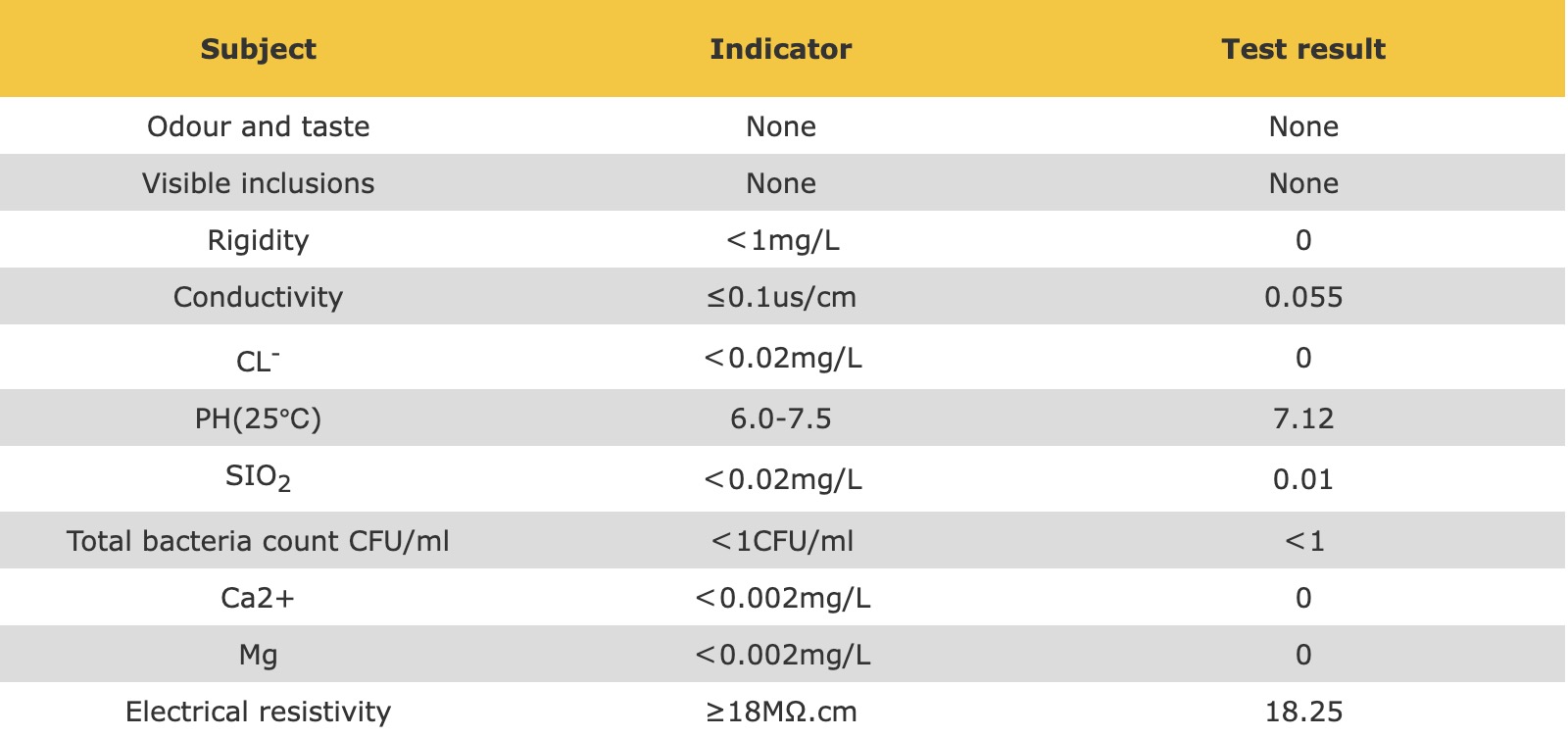

1. Deionized water refers to pure water after removing impurities in ionic form. "Deionization" is defined as the complete or incomplete removal of ionic substances in water, which mainly use the ion exchange resin treatment methods. Ion exchange resins are used to remove anions and cations in water, but there is still soluble organic matter in the water. Deionized water refers to pure water after removing impurities in the form of ions. From tap water to deionized water, a few steps are generally required:
①Filter large particle impurities through quartz sand and activated carbon.
②Then passes through the reverse osmosis membrane under high pressure.
③Finally, a step of ultraviolet sterilization is generally required to remove microorganisms in the water.
④ If the electrical resistivity has not reached the requirement at this time, the ion exchange process can be performed again, and the highest electrical resistivity can reach 18 trillion.
Relatively speaking, distilled water is just vaporized and then condensed. Its purity, such as electrical conductivity, is generally not as good as high-purity deionized water. Most of the water used in the semiconductor industries are high-purity deionized water.
Hydrogen ions and hydroxyl ion are not removed because these can be continuously ionized from water. The ion product of water is only related to temperature.
2. deionized water is prepared by ion exchange. The theory is that there are salts contained in raw water such as Ca(HCO3)2, MgSO4 and other salts, when flowing through the exchange resin, the cations Co2+ and Mg2+ are replaced by the active groups of the cation resin , The anions HCO3-, SO42- are replaced by the active groups of the anion resin, so that the water is purified. If the bicarbonate content in the raw water is high, a degassing tower should be designed in the middle of the anion and cation exchange column to remove CO2 gas and reduce the load of the anion bed. Generally, the conductivity of the deionized water from twin beds (cation exchange column and anion exchange column) can reach less than 10µs/cm. If the raw water is of good quality, the conductivity of the deionized water produced can reach less than 5µs/cm. The mixed bed ion exchange column is generally placed as a post-treatment After twin beds or reverse osmosis systems, the conductivity of the high purity deionized water produced can reach 18MΩ·cm.



It is suitable for light industry, textiles, medicine, biology, electronic energy, and can also be used for decolorization and purification of food and drugs, recovery of precious metals and chemical raw materials, and disposal of electroplating wastewater.
Application scope of deionized water equipment: It is often used in the microelectronics industry, semiconductor industry, power generation industry, pharmaceutical industry and laboratories. This purified water can also be used as pharmaceutical distilled water, food and beverage production water, chemical plant process water, etc. It is suitable to use as the high-purity water required for the production in the electronic industry such as kinescope glass shell, kinescope, liquid crystal display, circuit board, computer hard disk, integrated circuit chip, monocrystalline silicon semiconductor, etc.

25KG, 200KG, 1000KG/barrel packaging. Please store in cool places. The storage life is 2 years. Transported as general chemicals.
Name: Emily Zhang
Mobile:+86 15502106501
Tel:+852 54233625
Whatsapp:85254233625
Email:info@honorhonest.com
Add:Unit 1021,Beverley Commercial Centre,87-105 Chatham Road South, Tsim Sha Tsui,Kowloon